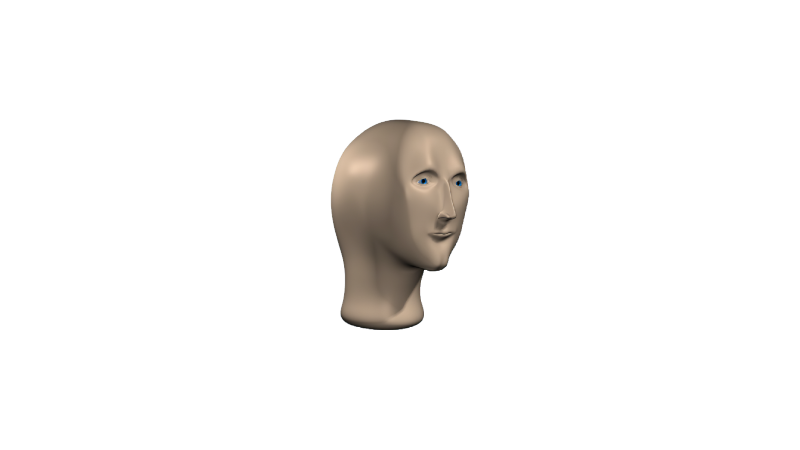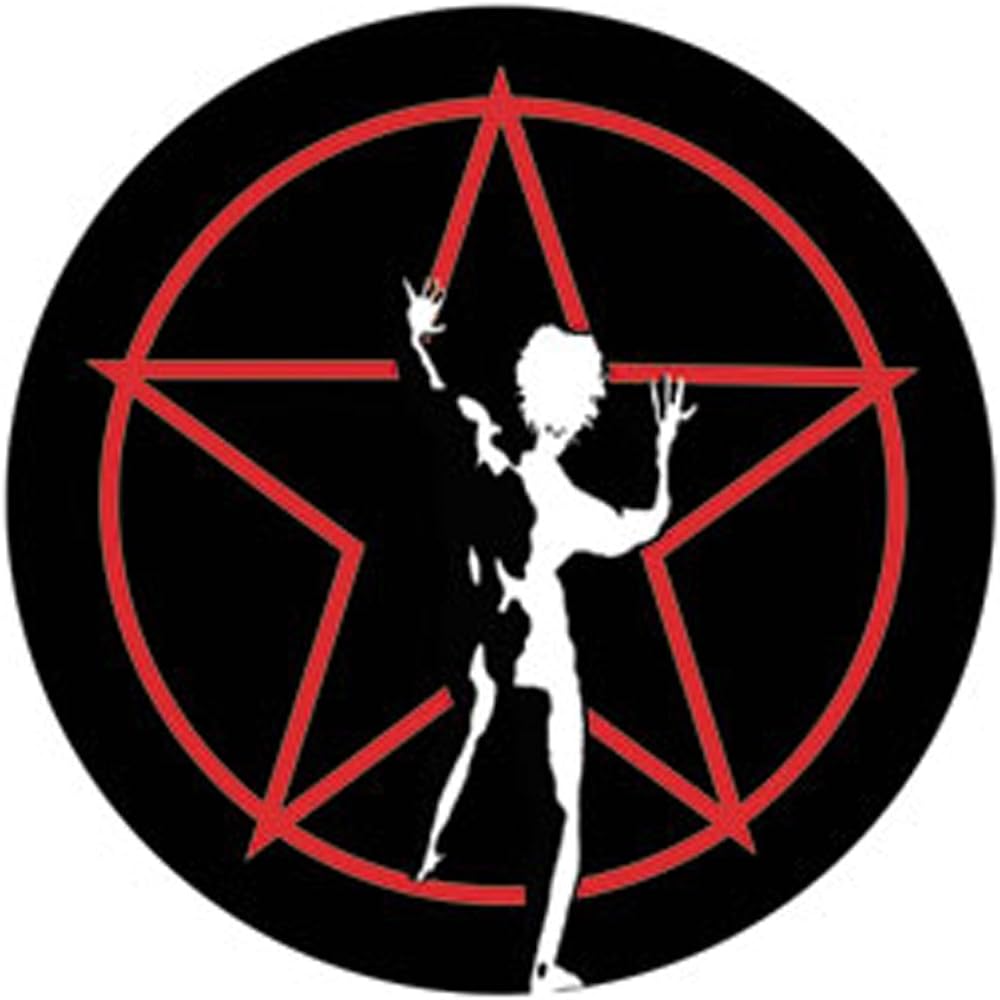This is one of the best memes I’ve ever seen in my life. It reminds me of the quantum race in Futurama, and the professor says “no fair, they looked at it” (maybe not exact words but the sentiment is there)
https://youtu.be/ia4YrCShFrQ?si=w5OYNEaNRpG8QvMZ for reference
This exactly! Thank you for posting ahahah
They must feel guilty or ashamed about their behaviour if they act differently when being observed.
code switching goofy ass electrons and atoms
Maybe particles are Catholic. Science can’t explain that.
The only time Baptist particles don’t drink is when they are being observed by another Baptist particle or other Baptist particles.
That’s such a clever joke lmao, man I have to finish futurama
lol this is the most creative use of this meme I have seen so far
I hate that I understand all the layers of this one except the duality one.
Light (in fact everything) is a wave, with some traditional particle properties added in. It’s relatively easy to wrap your head around the weirdness from that point of view. It’s almost impossible to make sense of it from a “particle with wave properties” view.
It’s also worth noting that it is not observation, but measurement that matters. All observation is measurement but not all measurements are observations.
Basically, to measure something, you need to hit it with something else. Using a particle analogy (since the wave version is FAR less intuitive), imagine a pool ball, rolling down a table. You can only detect balls hitting the cushions. To measure where it is, in between, you need to roll additional balls across the table. In traditional physics, these balls can be thrown as lightly as you like, as accurately as you like. Unfortunately, the wave nature of the system imposes lower limits on this. When you throw a ball, it changes the ball it hits. To gain information, you end up damaging or destroying the system you are measuring.
In quantum mechanical terms, the wave function is collapsed. In fact, it’s combined with the new particles you used to measure things.
In the original post. When you’re not looking, the wave of the photon passes through both spits, it then interferes with itself. Only when it reaches the detector is it collapsed (by interacting with the atoms of the detector). When you try and measure which slit it went through, you introduce a new wave. This changes the shape of the original, and makes it appear like a particle.
This is quite a fun way of making yourself think in terms of waves. https://www.andreinc.net/2024/02/06/the-sinusoidal-tetris
It’s almost impossible to make sense of it from a “particle with wave properties” view.
“I want to emphasize that light comes in this form-particles. It is very important to know that light behaves like particles, especially for those of you who have gone to school, where you were probably told something about light behaving like waves. I’m telling you the way it does behave- like particles.”
Richard Feynman, “QED The Strange Theory of Light and Matter.” Introduction, Page 15.
As you read deeper, it’s more and more obvious. Light is neither. It’s a quantum mechanical object that has no direct analog in classical physics.
Under some conditions, the wave properties are dominant. In others, the particle. In most quantum mechanical problems, both are present.
My main point is that you get log jammed if you try and add the wave properties to a particle concept. There’s nothing it can properly connect to. However, a wave can look like a particle, if you set it up right, and squint hard enough. In graph form, it’s normal distribution with standard deviation close to zero. Basically a spike, with some slight rounding. It’s far from perfect, but it gives our limited brains an anchor to work from.
Light is neither
I would agree that light is neither but Feynman is very adamant that it’s a particle and he describes all the properties of light using a particle only model. It’s much simpler conceptually to keep everything as a particle than treating light as a wave that sometimes collapses to a particle.
In his book he used the Mayan numbering system as an analogy. You can do everything in math by counting one by one, it’s only extremely cumbersome. In a similar way he saw waves as a mathematical method to make calculating particles easier in some situations. But underlying the fancy math, it’s still counting one by one.
Feynman argues that you can calculate and observe everything as only particles but you can never observe waves and have to make waves instantly transform into particles if you treat them as waves.
I think this is the part I’ve always have had issue trying to understand, thanks for helping clarify with an example.
Light is a particle and a wave, maybe?
Most particles are, researchers have shown that even macro-molecular objects like buckyballs behave like a wave in the double slit experiment.
I get that part. With absolutely no disrespect or jokes to the person who asked why there was a duality to the meme, I was actually wondering if the question was another joke I wasn’t understanding. (Many comment-based double entendres fly over my head, unfortunately.)
Still though, this whole area of science is confusing, especially when trying to understand EM radiation from antennas. You can shake some electrons in a metal wire and generate a wave (of photons?) that can cause the electrons in another wire to ocillate. (It’s really weird when you think a little on that.)
I have heard the word “photon” being used in regards to EM recently, and that is confusing me a bit. It seems legit on the surface when thinking about how energy is transferred, but it also kinda doesn’t. Would you happen to have any clarity on that?
I would suggest reading the book QED: The Strange Theory of Light and Matter by Richard Feynman. He won the Nobel Prize for his theory of how light and matter interact and it has been tested to more accuracy than even Einstein’s Theory of Gravity.
The book is written for anyone to understand without any mathematics.
What makes his explanations so simple is he is adamant that photons are particles and explains everything as particles interacting.
So your question about EM becomes: an electron in a metal emits a photon, the photon travels until it hits another electron in a piece of metal, that electron’s energy is measured and you received the signal.
Thanks for the details. I am to the point now that the concepts are clear enough that solid literature could fill in some blanks. (It’s taken me about a year or so before I could actually begin to visualize wave/particle concepts. Not gonna lie: PBS Space Time and Sabine Hossenfelder videos helped a ton.)
Ok, cool. The issue was that I had previously visualized the EM wave as being more akin to how electrons flow through wires, but with more magic involved. Once I started to revisit many my core conceptual beliefs, there was a ton that didn’t make sense. Basically, you just gave me some validation, thanks. (There aren’t too many people in my life that are interested in the nuances of photons, believe it or not.)
Last I read about this was years and years ago, and the claim at the time from the source I learned about it from was that the cause of this behavior is unknown. Is it known now?
I vaguely remember an explanation that whatever device/mechanism is actually used to “observe” the experiment was affecting the behavior of the light. Boiling it down to “observation changed the outcome” makes you picture something that changes depending on whether you look at it with your eyes, but there’s a lot more moving parts to the whole thing.
Exactly. The apparatus used to take measurements slightly alters the thing being measured. It’s not the act of looking at it with our eyes that causes any change.
An analogy that I find easier to understand is the tool used to measure tire pressure releases a small amount of air, thus changing the tire pressure (albeit negligible).
Its source is known. Unfortunately, it requires a different way of looking at everything. (It’s all waves, even if it looks like a particle most of the time). Wrapping this up as simple pop science, that can be digested by most laymen, is difficult.
What we don’t actually know is why everything is made of waves. We know the rules it follows, but not the underlying cause. Figuring that would would likely require an understanding of quantum relativity, something we only have a very weak handle on.
Idk, but you might find the answer to that question from one of these
https://www.youtube.com/playlist?list=PLuqavL7RN4jjdioivWm-Jwa6IoGG2_8Nr
Depends on what you mean by unknown. The meme (and a lot of common understanding) doesn’t know what it means to be observed. There is a leading theory, the Copenhagen interpretation. The biggest theory in opposition would be multi-world.
If it goes back to just two lines when you look at it, how’d they figure out there’s more of them when you’re not looking?
Measure, not look. Measure implies interaction. That’s why the result changes.
Hard to explain (in part because I’m not a scientist) but it isn’t when you look at it, it’s when the photon interacts with something. I’m gonna do my best, and if I’m hard to follow, that’s because I suck at writing
Edit: I’m gonna keep my comment here, but Veritasium did a good job showing the wave interference in this video
Before interacting with something, a photon acts like a wave, kind of like a wave in water, or a sound wave. The wave goes through both slits at the same time, which causes it to split into multiple waves. In places where two waves meet, their magnitude is added together. That is, where the peaks of those waves meet, the peak gets higher. Where the valleys meet, they get lower. Where a peak meets a valley, they cancel each other out. The empty parts on the detector are where peaks met valleys, and there was no measurable wave in those parts.
When a photon interacts with something, it collapses from a wave to a particle, and interacts with the detector only in one spot. I’ve seen it compared to a speck of dust in a raindrop. Before that raindrop hits the ground, you know that the speck of dust is somewhere in the drop, but not where it is in the drop. When it hits the ground, the speck can only end up in one spot. When the wave collapses, the photon is forced to interact with the detector in only one place. The location is random, but is more likely in spots with a larger magnitude of wave. Those are the places with the spots on the detector in the top picture.
If the photon interacts with something at the slits, like a polarizing filter, it collapses before an interference pattern is able to form. No interference pattern means it ends up interacting with the detector in one of the two areas like in the bottom picture.
Thanks!
Look at the PBS Spacetime link someone else provided, but in this case the looking is knowing which slot individual electrons or photons go through. Thus, wave pattern when which slot is not known; random scatter pattern when you know which slot.
It’s not just looking. The implication of the person looking is he’s looking at which path the light took through the slit. If you measure which slit the particle of light went through, the pattern disappears.







